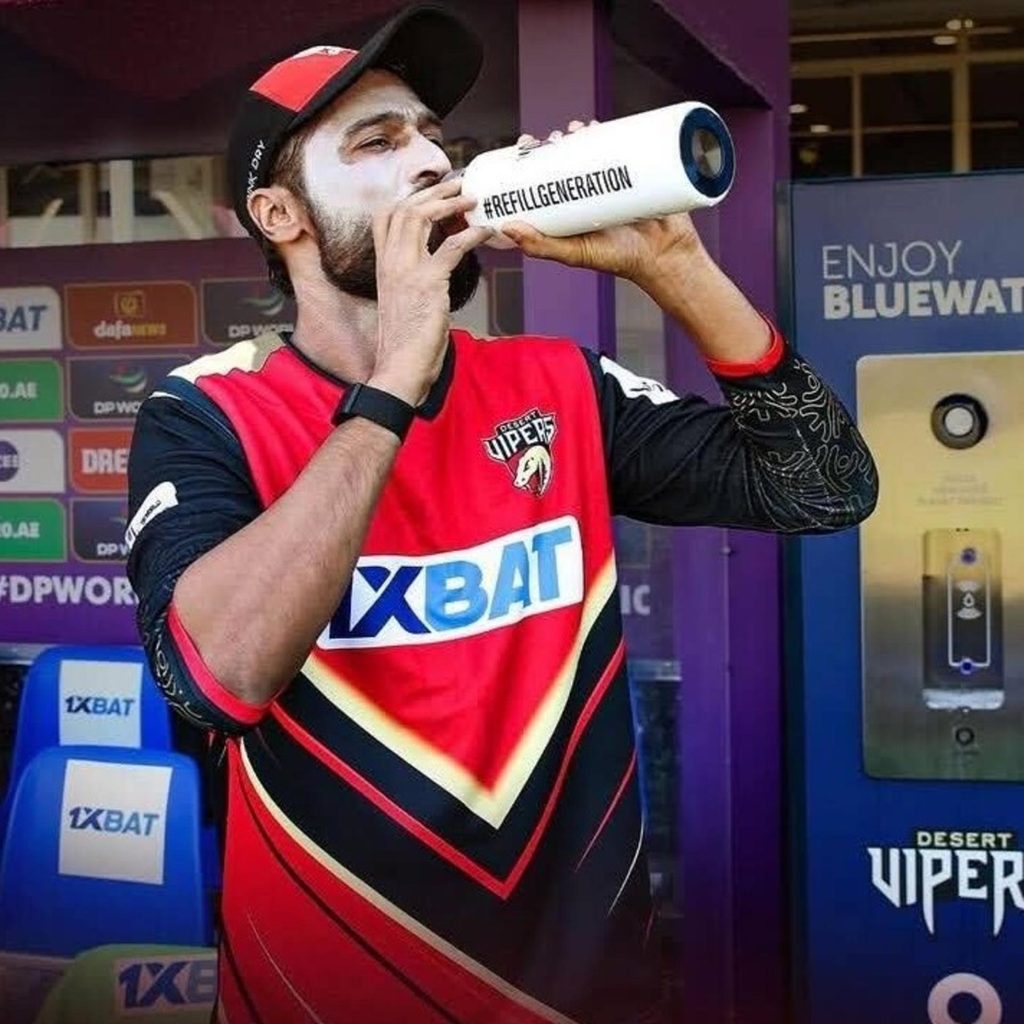
At current levels of carbon dioxide emissions, there’s only three years left before society breaches the symbolic 1.5*C warming limit, which would avoid the very worst impacts of climate change, according to the most up-to-date assessment of the state of climate change.
Climate change is already impacting sport, with cricket the turf sport most-affected. Extreme heat, flooding, bushfires, and drought, all of which are made more likely by climate change, are affecting our game. Players and fans are at increased risk from heat-related illnesses, and matches are called off due to the extreme weather events associated with climate change.
Against this backdrop, sport needs to play its part to reduce its environmental impact. Beyond this, though, sport has an opportunity to educate and inspire fans, empower athletes, and work with partners to take action beyond the pitch. Running events in a more sustainable way can allow sports organisations to address climate change and other sustainability issues, placing them at the forefront of the transition to a more sustainable future.

What makes a cricket event ‘sustainable’?
There are many definitions of sustainability, but this blog focuses on environmental sustainability, which is about reducing environmental impacts to ensure that future generations have the same access to resources and living conditions that previous generations have enjoyed. Whilst there are many environmental areas of concern, two of the biggest are climate change and biodiversity loss.
When we talk about how sustainable an event is, the most common way to measure it is by its carbon footprint. This takes into account so many aspects, like the following: travel (how fans and teams get to and from matches – often the biggest slice of the pie!); venue energy & water (the power and water needed to run the stadium); materials & infrastructure (everything from the kit to fuel for generators); and food & drink (what’s consumed on site and how it’s sourced. Every single one of these areas creates greenhouse gas emissions, contributing to that overall footprint.
To reduce the carbon footprint from events, sports can adopt a whole range of smart solutions. For example: powering venues using renewable energy, such as solar panels; encouraging active travel, the use of public transport, or car sharing; offering vegetarian and vegan options, particularly reducing or removing red meat options; reducing the amount of waste they produce, through using reusable containers for food and drink, and increasing recycling rates; making merchandise from recycled materials and offer opportunities for donation of old kits; and finally, educating and inspiring everyone who attends to learn a little bit more about sustainable solutions which they can adopt in their own lives.
How sustainable are cricket events?
It’s fantastic to see several cricket organisations globally stepping up to quantify and reduce the carbon footprint of their events, and importantly, sharing their plans for action.
At the national level, the England and Wales Cricket Board (ECB) has published an Environmental Sustainability Plan for Cricket (their emissions were 25,280 tCO2e in 2022, not including fan travel), providing guidance for county clubs in their sustainability journeys, and committed to halving greenhouse gas emissions by 2030 and reaching net zero by 2040. Cricket Australia (CA) is also developing an Environmental Sustainability Action Plan to quantify the baseline carbon footprint for Australian cricket and set actionable targets.
Considering venues, Marylebone Cricket Club (MCC), as owner of Lord’s Cricket Ground, published their 2022 baseline audit, covering Scope 1 and 2 emissions, and is aiming to collect data on their Scope 3 emissions within the next few years. They are also a signatory of the UN Sports for Climate Action Framework, which is an encouraging statement of intent.
At the team level, some are clearly ahead of others. Glamorgan CCC has published an Environmental Social Governance (ESG) Report for 2023, stating their commitment to reduce their carbon footprint and report annually on their progress. In the Indian Premier League (IPL), Royal Challengers Bangalore (RCB) are aiming to reduce their environmental impact through their ‘Go Green’ games and Rajasthan Royals have made partnerships to install solar panels across Indian homes. While finding their full Scope 1, 2, and 3 baselines publicly available might still be a work in progress, these are strong signals of intent and emerging efforts in comprehensive measurement.

Finally, some organisations have hosted specific matches to promote awareness of sustainability issues and reduce the environmental impact of games. In 2023, Edgbaston hosted a “Go Green Game” between England and New Zealand (carbon footprint of 328 tCO2e, including fan travel). The event was designed to significantly reduce the match’s carbon footprint and raise sustainability awareness among fans and the wider community. Several different initiatives were implemented, such as free public transport, use of renewable energy, waste reduction, sustainable food options, and even electric lawnmowers! It’s all part of their bigger goal to become a Net Zero venue by 2030. Also in the UK, Surrey CCC are hosting their second ‘Sustainabili-T20’ on 6th July 2025, aimed at raising awareness about climate change and environment-friendly practices.
What we’re seeing across the cricketing world, from Edgbaston’s groundbreaking “Go Green Game” to the ambitious plans of the MCC and the emerging efforts in the IPL, is a powerful movement towards a more sustainable future for sport. The common threads are clear, a commitment to robust measurement (including the challenging Scope 3), the invaluable role of expert sustainability partners like Carbon Happy World, and the crucial need for transparent reporting and widespread engagement.

Desert Vipers’ Season 3 Sustainability Match
We are committed to reducing our environmental impact, and sharing our carbon footprint as we progress on our journey. With that in mind, our Season 3 Sustainability Match Report was released on 5th June 2025 – World Environment Day. This was our second Sustainability Match and aimed to build on the successes from the first, focused on raising awareness about climate change and sustainability issues and trialling innovative new ways to reduce the environmental impact of matches in a way which is applicable to other events around the world.
In Season 3, the footprint of the match was measured to be 30.86 tCO2e, higher than Season 2’s footprint, which was because we recorded on more areas with a greater accuracy, showing how difficult it is to understand the true carbon footprints of events, and why transparency in what is / isn’t being included is so critical. Interestingly, fan travel is a lower share of our footprint than other events, because most of the fans who come to matches are local, meaning no international travel was recorded. The biggest sources were waste, kit, and air-con energy. Knowing this in detail helps us figure out exactly where we can improve going forward, and we encourage other sports events to showcase their own footprints too – let’s learn from each other!.
Sustainability Spotlight – United Nations Sports for Climate Action Framework
This blog’s Sustainability spotlight features the United Nations (UN) Sports for Climate Action (S4CA) Framework, which encourages and supports sports organisations to accelerate action on climate change. As a signatory, you must target a 50% emissions reduction by 2030, and reach Net Zero by 2040. In addition, signatories to the UNS4CA must report on their carbon footprint annually and educate fans around sustainability issues. Desert Vipers are the first signatory from Dubai, and the first Asian cricket organisation to sign up. Indeed, there are only a handful of cricket organisations in the world who have signed up to the UNS4CA, so we encourage others around the world to join us in this mission and enhance the role of cricket in creating a more sustainable future for both our game and our world.
About Carbon Happy World
At Carbon Happy World, we're dedicated carbon accountants and ESG software consultants. We empower businesses to measure, manage, and significantly reduce carbon emissions. By providing a range of innovative solutions and insights, we help organisations achieve their carbon net zero goals and genuinely enhance their sustainability practices. As at Carbon Happy World every calculation starts a conversation.
#SportsForClimateAction #SustainabilityMatch #LondonClimateActionWeek #Sustainability

